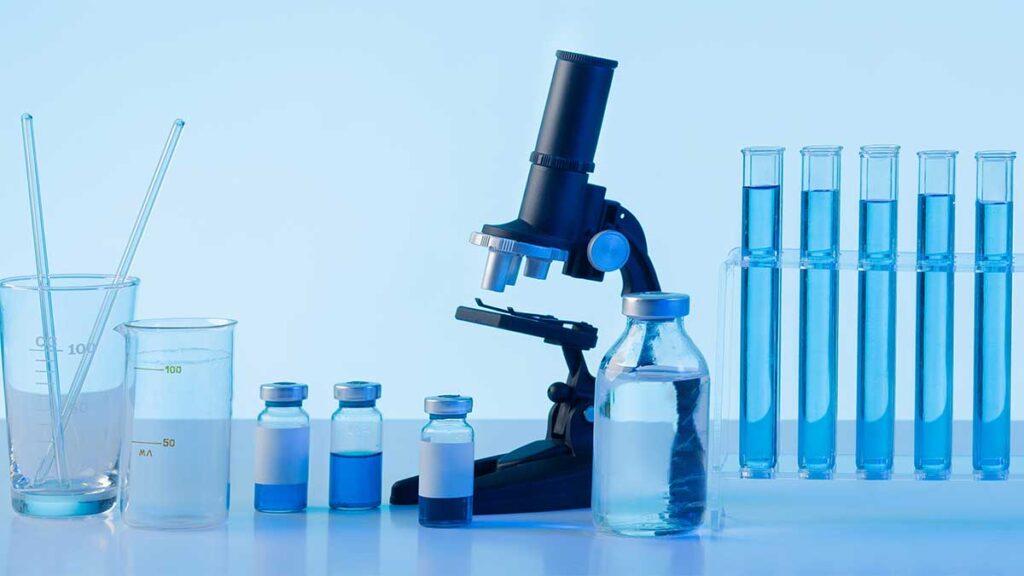A Journey through the Microscope World Number 1 supplier
Embark on a captivating journey through the invisible world with high-quality microscopes from eqipped.com, India’s leading supplier of lab equipment. Explore student microscopes, dissecting microscopes, and more to unlock the secrets of the unseen. Discover how microscopes empower scientific discovery in classrooms and labs. Visit eqipped.com today!
There are many wonders in the world, both visible and invisible. Our eyes are able to see a wide range of details. However, there is a world beyond our reach. Here comes the fascinating world microscopes. The various types of microscopes have revolutionized the way we understand the universe. From the smallest building blocks of life, to the most intricate details in materials.

This blog will take you on a trip through the “microscope universe” as we explore different types of microscopes and their uses. We will focus on tools that are commonly used in high school science laboratories, so this information is relevant to students.
Microscopical Dissection: microscope
We begin our exploration with the stereo microscope. A dissecting microscope offers a magnified three-dimensional view, unlike its more complex cousin the composite microscope. It is therefore ideal for viewing the larger structures in biological specimens. Imagine a biology student using a microscope to study the intricate anatomy and structure of a flower, or an insect. This ability to view small objects in 3D allows a better understanding of their function and form.
A Light Shining on the Microscopic World
The majority of microscopes in high school science laboratories are light microscopes . These microscopes use visible light to magnify and illuminate objects. The typical student microscope is made up of an eyepiece to view, objective lenses for magnifying, a stage for holding the specimen and a light, usually a built-in bulb. Students can magnify objects by hundreds of times using the objective lenses and passing light through specimens.
The Essential Lab Companions
High school chemistry laboratories often use a wide range of lab equipment to conduct experiments. Along with microscopes, you may find test tube to hold small quantities of liquids; volumetric jars to prepare precise volumes of fluids; and bunsen burners to heat solutions. Students can conduct experiments using these tools with microscopes, such as observing chemical reactions and analyzing cellular elements.
Beyond the Light Microscope :
Light microscopes can be extremely valuable, but they also have their limitations. Light microscopes are limited to a maximum magnification of 1,000 times. This is not enough for observing extremely small structures such as viruses or individual atoms. electron microscopy is the answer. The electron microscope uses a beam instead of light in order to achieve magnifications that are millions of times higher than those of light microscopes. Due to their cost and complexity, electron microscopes do not usually appear in high school laboratories.
The Digital Revolution : microscope
digital microscopy has been created by the advancement in technology. These microscopes work similarly to traditional ones, but they also include a digital camera that can capture pictures and videos of magnified specimens. Students can document their findings and use them for analysis or to share with other students.
It can be overwhelming to choose from the many types available of microscopes. The choice of microscope is determined by the object that will be examined. A dissecting microscopy is best for examining an insect’s external features, while a high-magnification compound microscope is more suitable for studying a leaf’s cellular structure.
Conclusion: About Microscope
Microscopes have been powerful tools for countless scientific discoveries. Microscopes are essential tools for expanding our understanding of the universe. The “microscope journey” is an exploration that pushes the limits of what we are able to see and understand. The next time you see a microscope, think of the amazing world that lies behind it.
- The Power of Advanced Filtration and Purification Systems in Chemistry Labs
- Chemistry vs. Biology Lab Equipment: What Sets Them Apart? Lab Equipment Used in Chemistry and Biology.
- The Future of Infectious Disease Diagnostics: Cutting-Edge Lab Equipment
- The Importance of Lab Equipment in Biotechnology
- Mastering the Miniature: A Guide to Micropipettes





